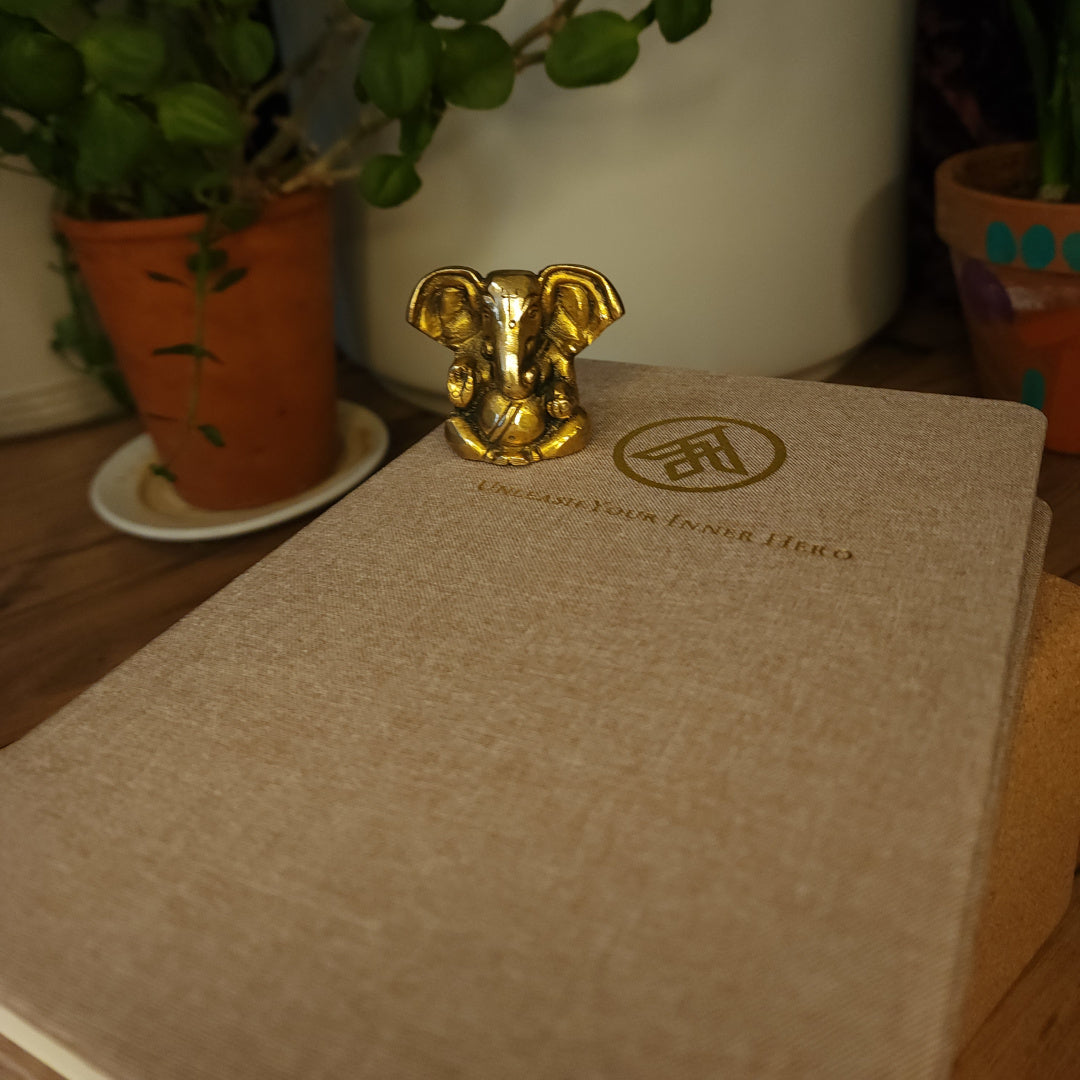Muladhara (Root Chakra)
Jack UtermoehlShare
Muladhara, or the Root Chakra, is the first of the seven primary chakras in yogic philosophy.
Located at the base of the spine, it governs survival, security, and a sense of belonging.
The name Muladhara comes from Sanskrit, where mula means "root" and adhara means "support" or "foundation."
This chakra represents grounding and connection to the physical world. When balanced, it provides stability, strength, and resilience.
When imbalanced, it can manifest as fear, instability, or disconnection from reality.
Jewelry Designed for Your Practice
We created this collection to honor the wisdom and beauty of yoga. Each piece is crafted with intention to support your journey, on and off the mat.
Etymology and Meaning
Sanskrit Spelling: मूलाधार
Root Words: "Mula" (root) + "Adhara" (base, foundation)
Translation Variations: Root chakra, base chakra, foundation energy center
Pronunciation: Mūlādhāra [MOO-lah-DHAH-rah]
Muladhara acts as the energetic foundation for the entire chakra system, influencing physical stability, emotional security, and grounded awareness.

Symbolism and Elements
Color: Red, representing vitality, life force, and survival.
Element: Earth, symbolizing stability, grounding, and physical existence.
Bija Mantra: Lam, the vibrational sound associated with Muladhara.
Symbol: A four-petaled lotus, representing the four aspects of human consciousness connected to this chakra: mind, intellect, consciousness, and ego.
Mudra: Prithvi mudra, a hand gesture that increases grounding energy and strengthens the earth element in the body.
Role of Muladhara in Yogic Philosophy
Muladhara governs the most fundamental aspects of existence:
Survival Needs: Food, shelter, safety, financial stability.
Physical Health: The state of the bones, legs, feet, and immune system.
Emotional Security: Feelings of safety, trust, and connection to family or community.
A well-balanced root chakra fosters confidence, stability, and a sense of belonging, while an imbalanced one can cause insecurity, fear, or disconnection from the body.
Signs of Imbalance
A blocked or overactive Muladhara can manifest as:
Physical Symptoms: Lower back pain, leg discomfort, immune disorders, or chronic fatigue.
Emotional Symptoms: Anxiety, fear, restlessness, or feeling "ungrounded."
Behavioral Patterns: Hoarding, financial instability, or difficulty trusting others.
Practical Application
In Yoga Practice
- Practice grounding poses like mountain pose (tadasana) and warrior I (virabhadrasana I).
- Engage in seated postures to connect with the earth and establish stability.
- Chant the Lam mantra during meditation to activate Muladhara.
- Practice grounding meditation.
In Daily Life
- Walk barefoot on natural surfaces to strengthen grounding energy.
- Eat root vegetables (carrots, beets, potatoes) to support the root chakra.
- Establish routines and financial stability to reinforce a sense of security.
Quotes and Wisdom
"Like a tree with deep roots, those who are grounded cannot be easily shaken."
"Without a strong foundation, nothing lasting can be built."
Modern Relevance
In today’s world, stress, uncertainty, and instability frequently impact the root chakra.
Many experience fear-based living, financial worries, and disconnection from nature.
Strengthening Muladhara through grounding practices restores balance, providing a stable foundation for growth, resilience, and inner peace.
Related Concepts
Chakras: The seven energy centers that regulate physical, emotional, and spiritual well-being.
Svadhisthana Chakra: The sacral chakra, governing emotions and creativity.
Prithvi Tattva: The earth element, closely linked to Muladhara's grounding energy.
How to Balance Muladhara
Mindset: Develop a sense of safety and trust in the universe.
Actions: Engage in grounding activities like yoga, mindful walking, and deep breathing.
Reflection: Identify areas of life where you feel unstable and work on strengthening them.
Suggested Reading
- Wheels of Life by Anodea Judith.
- Eastern Body, Western Mind by Anodea Judith.
- The Root Chakra: Healing the Foundation by Brenda Davies.
Conclusion
Muladhara, the root chakra, is the foundation of stability, security, and survival.
When balanced, it fosters confidence, grounding, and resilience.
By integrating grounding practices, mindful movement, and conscious living, individuals strengthen their root chakra, creating a solid base for personal and spiritual growth.







